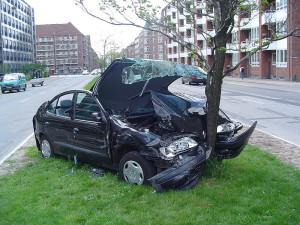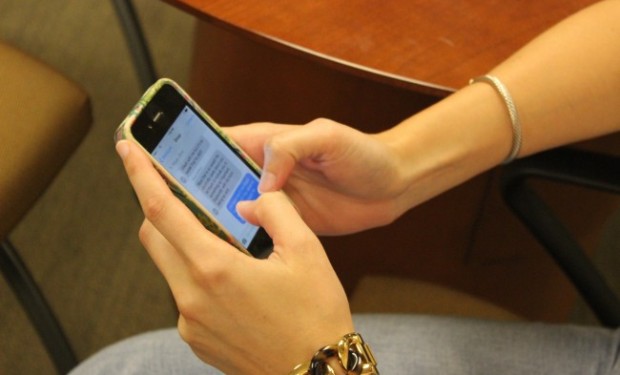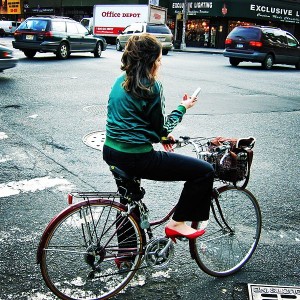Texting while someone else is driving may lead to liability in New Jersey
On September 21, 2009, eighteen-year-old Kyle Best was texting (pdf) when he crossed the double yellow lines of a New Jersey roadway in his Chevy pick-up truck and struck David and Linda Kubert on their motorcycle. All three survived, but David and Linda each lost their left leg and suffered a number of other injuries.
There was no dispute that Best was texting at the time of the accident. Through Best’s cell phone records, obtained through discovery, the Kuberts’ attorney determined that the teenager left work on September 21, 2009, around 5:40 p.m., at which time he began texting a friend. He texted the same friend at 5:47 p.m. and again at 5:48 p.m. Just seconds later, at 5:49 p.m., Best placed a call to 911 to report his accident with the Kuberts.
Best settled with the Kuberts, but he was not the only person the couple blamed for the horrible wreck. After all, someone was on the other end of Best’s text messages. That person was Shannon Colonna, a friend Best texted regularly. Twenty-five seconds before the 911 call was placed, the phone records indicate that Colonna sent a text to Best. This was the text to which he replied just seventeen seconds before the 911 call.
The Kuberts brought charges against Colonna, the sender of the text message, raising a controversial legal issue.
Colonna was not in the car with Best, but the Kuberts brought claims against her as well, raising a controversial legal issue: can the remote sender of a text message be held liable to persons injured due to the recipient-driver’s distraction from the text?
Colonna moved for summary judgment after she was added to the lawsuit. Her attorney argued before the trial court that she could not be held liable for the Kuberts’ injuries because she was not present at the time of the accident, had no legal duty not to text Best, and had no reason at all to know that Best was operating a vehicle at the time she was texting him.
The trial judge held that Colonna did not have a legal duty to avoid texting Best, even if she knew he was operating a vehicle, and dismissed the claims against her. The Kuberts appealed the decision, and the opinion that was issued on August 27, 2013, by the intermediate Appellate Court is one that could seriously impact anyone who texts, even if they are not operating or within a moving vehicle.
When a “texter knows or has special reason to know that the intended recipient is driving and is likely to read the text message while driving, the texter has a duty to users of the public roads.”
The Appellate Court held that when a “texter knows or has special reason to know that the intended recipient is driving and is likely to read the text message while driving, the texter has a duty to users of the public roads to refrain from sending the driver a text at that time.”
The court’s holding ultimately proved to be too narrow to include Colonna’s act of texting Best, but it set a precedent, nonetheless. Prior to this decision, New Jersey law held that plaintiffs could recover against not only a driver of a vehicle, but also a passenger in that vehicle. Recovery is permitted under two conditions: either (1) a special relationship giving the passenger control over the driver’s conduct, such as an employer-employee or parent-child relationship, or (2) the defendant-passenger’s actively encouraging the driver to commit the negligent act.
Colonna did not meet either of the two conditions; she simply sent Best a text message. First, the pair did not have a special relationship, acknowledged as much by the Court: “In September 2009, Best and Colonna were seeing each other socially but not exclusively; they were not boyfriend and girlfriend.” Second, Colonna’s actions were not found to be active encouragement. Whether her text messages required a response is still unknown, but the court found that to be irrelevant. According to the court’s opinion (pdf), “even if a reasonable inference can be drawn that she sent messages requiring responses, the act of sending such messages, by itself, is not active encouragement that the recipient read the text and respond immediately.”
There is no New Jersey case law that imposes a duty not to text someone if you know they are driving.
The court further stated that even if Colonna knew Best was driving, there is no New Jersey case law that imposes a duty not to text someone if you know they are driving. The plaintiffs, in order to succeed against Colonna, would have had to prove not only that Colonna knew Best was driving but also that she knew or had some special reason to know that Best would read her text message while driving and would then be distracted from the road and the operation of his vehicle.
Phone records indicated that the two texted on a regular basis, but that was not enough evidence to impose liability on Colonna. Prior text messages did not indicate anything that would imply that Colonna and Best often texted while Best was driving or that Colonna would have reason to know Best would read her text and become distracted. The burden of proof is a difficult one to meet and one the plaintiffs could not meet in this case.
For a duty to arise, the risk of harm must be foreseeable. According to the Court’s opinion, “It is foreseeable that a driver who is actually distracted by a text message might cause an accident and serious injuries or death, but it is not generally foreseeable that every recipient of a text message who is driving will neglect his obligation to obey the law and will be distracted by the text.” This was the case here: Colonna had no reason to know that Best would neglect his obligation and put others at risk.
Although the court did not hold Colonna liable, a limited duty will now be imposed on senders of text messages in other situations.
Although the court did not find Colonna liable, a limited duty will now be imposed on senders of text messages in other situations. Future courts will have to use a balancing test to analyze the relationship between the sender and recipient of the text(s), the nature of the possible risk, the opportunity and ability to exercise care, and the public interest in the solution.
When a sender texts someone whom they know is driving and will immediately view the text, the sender has disregarded the foreseeable risk of harming the public. This is precisely the type of situation when the court will impose liability on a remote sender.
One of the three appellate judges, Marianne Espinosa, disagreed with the majority’s analysis regarding Colonna’s duty, though not with the holding, and wrote a concurring opinion (page 31 of pdf) stating that Colonna had no duty to the Kuberts. “Even assuming that Colonna knew Best was driving, her conduct in sending a text under the circumstances here amounted to that of a companion who merely participated in the same activity and who did not actively encourage Best to ignore applicable law and safety hazards.” Furthermore, Judge Espinosa posited that even without active encouragement, texting with the knowledge that you are creating a risk of harm to the others because of the recipient’s expected dangerous behavior is not enough to be actionable negligence.
Legitimate reasons exist for imposing a duty on one person for another’s safety, but there are some instances when this is just not feasible or enforceable.
Many have found issue with the New Jersey Appellate Court’s analysis and seem to side with Espinosa. One article in particular discusses the controversy behind the majority’s decision to treat a texter who is outside of the vehicle and in a location totally separate from the driver like a passenger who is in the car.
 The article’s author, Emily Bazelon—an editor for Slate and Fellow at Yale Law School—addresses that there are legitimate reasons for imposing a duty on one person for another’s safety, but notes that there are some instances when this is just not feasible or enforceable. The idea of finding a texter liable for a separate driver’s negligence is analogized to a bartender or party host who continues to serve someone whom they know is going to get behind the wheel of a car and drive home. “States tend to write laws that impose this kind of liability, but not necessarily to enforce them.” This is because it is nearly impossible to hold one person liable for another person’s bad choices.
The article’s author, Emily Bazelon—an editor for Slate and Fellow at Yale Law School—addresses that there are legitimate reasons for imposing a duty on one person for another’s safety, but notes that there are some instances when this is just not feasible or enforceable. The idea of finding a texter liable for a separate driver’s negligence is analogized to a bartender or party host who continues to serve someone whom they know is going to get behind the wheel of a car and drive home. “States tend to write laws that impose this kind of liability, but not necessarily to enforce them.” This is because it is nearly impossible to hold one person liable for another person’s bad choices.
A person almost never has control over what another person else does behind the wheel of a car, particularly if they are not in the vehicle with him or her. This is why bans on texting while driving have been put into place, but the recent New Jersey Appellate Court opinion is proof that the bans are not as effective as legislators would have hoped.
Banning use of mobile devices by a driver is not changing the behavior of New Jersey drivers, so now courts are looking to the person on the other end of the conversation.
The appellate court’s decision evidences a lack of effectiveness in state bans on cell phone use while driving. Banning use by a driver is not changing the behavior of New Jersey drivers, so perhaps a new avenue can now be pursued in the courts to prevent the person on the other end of the conversation from potentially distracting a driver.
The ineffectiveness of state bans on cell phone use while driving has been explored thoroughly in a study (pdf) conducted by Rahi Abouk and Scott Adams, both of the University of Wisconsin-Milwaukee. Data was gathered on road fatalities from 2007, when the first state enacted a texting and driving ban, to 2010 and was paired with laws from forty-nine states.
The study divided state bans into three categories: the weakest kind only ban texting for certain drivers, such as those who have just received their license, and only allow police to charge an offender if they pulled them for a separate, primary cause; the next category of bans exists in states that completely ban texting for all drivers and allow police to charge it as the primary offense; the third category of bans forbids all hand-held phone use, meaning talking and texting are not tolerated.
The study examined fatality rates involving just the driver, so although that does not include cases such as the Kuberts’, the results are still relevant. The only states that experienced a drop in fatality rates were those that enforced strict bans, meaning absolutely no hand-held phone use while driving. Between 2007 and 2010, those states saw an overall decrease in fatalities by eight percent. States with the weakest ban saw no change, and states in the middle category actually rebounded, meaning that fatalities dropped immediately after enactment of the bans, but four months later, the rates were back up again.
So where does New Jersey fall in all of this? Surprisingly, it is one of only ten states that enforces the strictest category of bans.
It is evident that policy changes need to be made.
Cell phone use paired with driving is undoubtedly dangerous and is continuing to cause fatalities that could easily be avoided if drivers would put the phone away and focus on the road. It is evident that policy changes need to be made, but imposing liability on people so far detached from the driver, not even in the same location or perhaps not even in the same state, could be a dangerous path to take, as well as a nearly impossible standard to prove.







